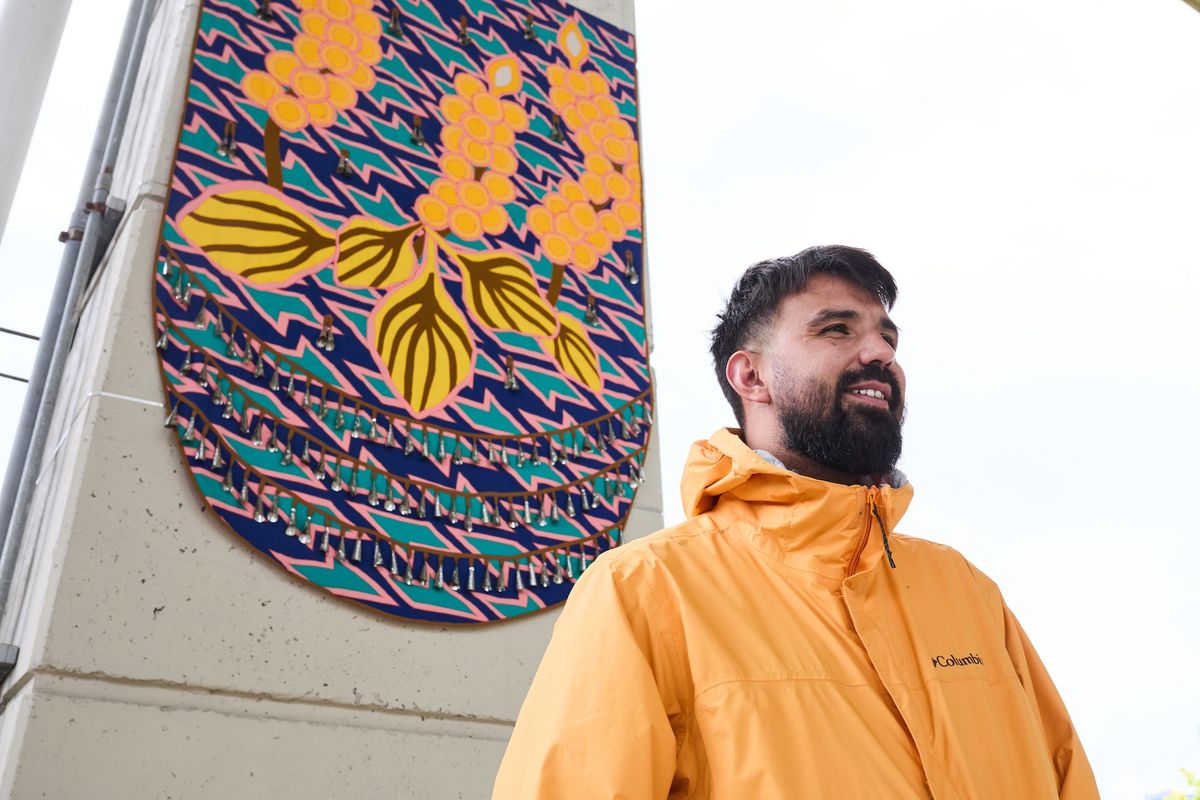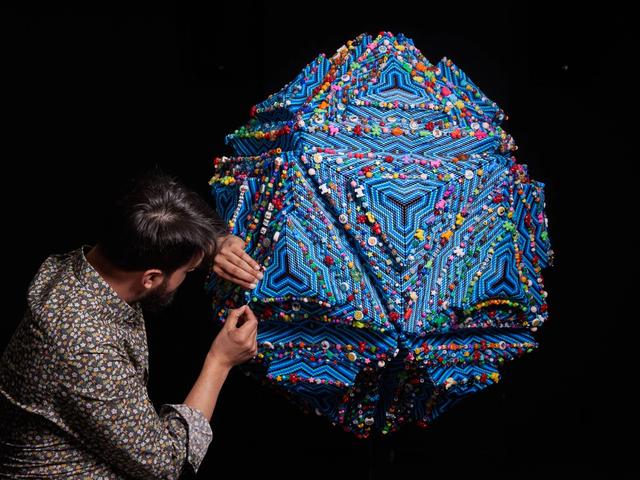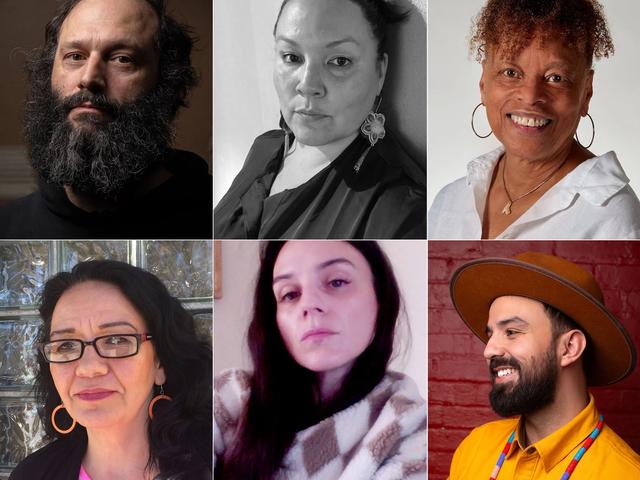The 34-year-old Anishinaabe artist Nico Williams—known for his traditional beadwork renderings of found objects from bingo cards to lawn chairs and one of six finalists for Canada’s top art prize, the Sobey Art Award—recently debuted a subtle but powerful public art commission in Toronto.
Williams’s Tracings (2024) consist of five sewn and appliqued patches incorporating traditional Indigenous regalia designs. They are part of the summer exhibition Softer City (until 6 October) at The Bentway, a new public space under Toronto’s Gardiner Expressway. In a symbolic act of community and cultural repair, the Tracings cover up chips in the concrete pillars holding up the expressway. City maintenance crews conduct a process of listening for air pockets in the concrete which can potentially lead to decay and, once those have been identified, the surrounding concrete is pre-emptively chipped away and then later patched. This work, which involves multiple crews and steps, often leaves scar-like crevices behind on the concrete columns. Now these crevices are covered by Williams’s colourful interventions, which he hopes will be a “celebration of our culture and our continued presence in the territory today”.
The exhibition afforded Williams room to experiment with new forms, he tells The Art Newspaper from his Montreal studio. This is his first time not applying beadwork directly onto material but rather working with the concept of tracing, based on traditional Anishinaabe practices. “Floral motifs made of birch bark cutouts were passed down through generations,” he says. “And would be filled in with beads.”
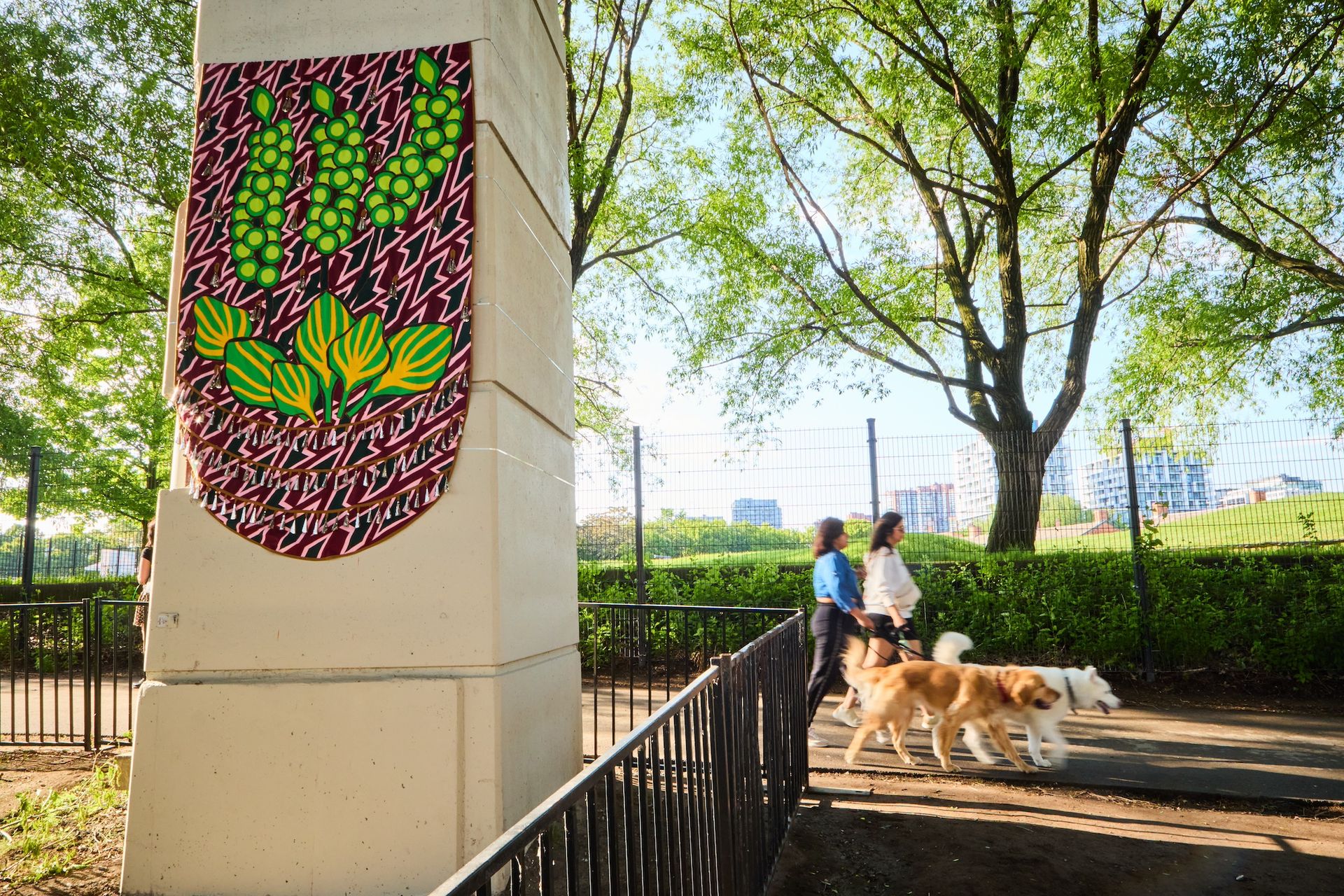
One of Nico Williams's Tracings (2024) installations at The Bentway Photo by Samuel Engelking, courtesy The Bentway
In a unique fusion of the synthetic and the natural, and the old and the new, Williams replaced birch bark with Bristol board to make large templates in his studio. The templates were made from five blank sheets of Gore-Tex with different base colours. “We kept adding to the templates and experimenting,” Williams says, “layering pieces of pre-dyed fabric on fabric and sewing them and moving them around.”
Williams, who says he is now “in love with textiles”, used a sewing machine for the first time in his studio for this project. “Working with Gore-Tex,” he says, “is like working with leather. When I got to one layer with five cut-outs, I kept pushing it through machine and hoping it wouldn’t break the needle.”
The intricacy and precision of the work was time consuming. “It would have taken me several years to complete on my own,” Williams says, “but with the help of my seven-person studio team, it took six months.”
Williams grew up on the Aamjiwnaang First Nation reserve near Sarnia, Ontario—about 275km west of Toronto, across the St Clair River from Michigan—where he learned beadwork from his grandmother and was influenced by the local Woodlands School of Indigenous artists that included Norval Morrisseau and Daphne Odjig. He used Gore-Tex rather than more traditional pelts and skins for his Bentway project partly due to its durable, weatherproof qualities, but also as the new material reflects changes in Indigenous culture.
“When I was in Montreal buying the Gore-Tex at a shop, I saw lots of families from up north, buying it to make coats for the winter,” he says. It is a more convenient material, he adds, but the shift “has its own commentary”.
Instead of traditional floral motifs, he used the plantain as his central image for Tracings. The plant “came over with colonization”, he says, is called “white man’s foot” by Indigenous communities and was seen as “a warning sign that a colony was forming around them”. But soon he says, the plant was adapted into traditional Indigenous medicine practices.
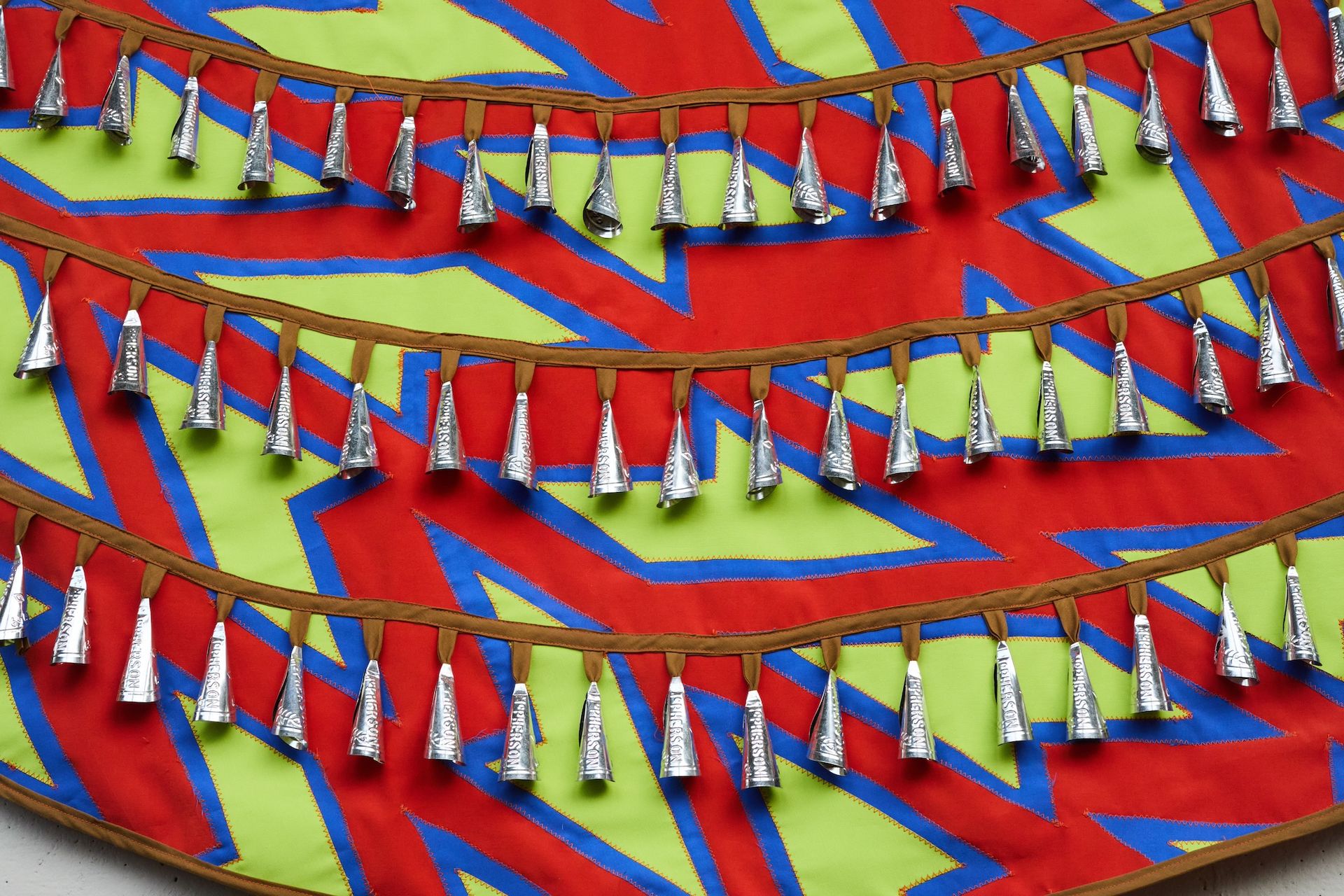
Detail of one of Nico Williams's Tracings (2024) installations at The Bentway showing its jingle cones Photo by Samuel Engelking, courtesy The Bentway
The plantain cut-outs and colourful geometric designs are augmented with hand-rolled jingle cones, which dance and sway in the wind. Their melodic chiming transform the newly pedestrian-friendly area under the expressway into a place of vitality and symbolic cultural mending. (The artist recently created a pair of similarly bold installations at the Brooklyn Museum.)
Williams’s work is so precisely crafted that many passersby mistake his interventions for prints, he says. “Every single piece has been cut by hand, sewn and then sewn again,” he adds.
He describes his Sobey Art Award nomination and the Softer City exhibition as “exciting opportunities”. “This is an incredible moment for Indigenous visibility and opening up pathways for future artists from our communities.”
- Nico Williams’s Tracings are part of Softer City, until 6 October, The Bentway, Toronto


